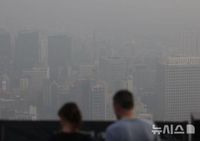On March 26, 2025, air quality across central South Korea showed significant improvement, prompting the authorities to lift yellow dust advisories that had been issued just a day prior. In major cities like Daejeon and Jeonbuk, fine dust concentrations dropped below the alarming threshold of 100 micrograms per cubic meter (µg/m³), allowing residents to breathe easier and enjoy clearer skies.
The yellow dust advisory system classifies air quality conditions into four stages—interest, caution, warning, and serious. The 'caution' level is raised when concentrations of fine dust (PM-10) persist at 300 µg/m³ or higher for two hours. On March 25, the Ministry of Environment issued a yellow dust advisory at the 'caution' stage for both Jeonbuk at 3 PM and Daejeon at 4 PM, in response to rising levels of fine dust caused by a seasonal influx of yellow dust.
However, just a day later, the situation improved dramatically. As reported by local news and environmental agencies, on the morning of March 26, fine dust levels in Daejeon and Jeonbuk dropped to below 100 µg/m³, allowing health officials to officially lift the warnings. The improved air quality was welcomed by residents who had been advised to limit outdoor activities during the elevated pollution levels.
Adding to the good news, the Korea Environment Corporation reported that air quality advisories were also lifted for Ulsan. By 3 AM on March 26, the average hourly concentration of fine dust in Ulsan was recorded at 81 µg/m³, well below the advisory threshold of 100 µg/m³. This development marked a relief for residents who had been affected by pollution concerns in the preceding days.
Environmental experts continued to emphasize the importance of monitoring air quality, particularly during spring when yellow dust events are more common due to weather patterns. These advisories play a crucial role in alerting the public to take precautionary measures against health risks associated with fine dust.
Officials are optimistic that weather patterns may stabilize in the coming days, further improving air quality. However, they remind citizens to stay informed about weather and air quality updates, especially during this time of year when fluctuations can occur rapidly.
The combination of regional efforts and favorable meteorological conditions has contributed to this improvement. Authorities encourage residents to remain cautious and to follow updates from local weather agencies.





